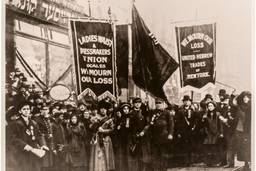What the Media Need To Know About Trans People
After the suicide of ‘Dr. V.’ trans activists and journalists discuss how to prevent future tragedies.
Jude Ellison Sady Doyle

The media kicked off 2013 with a number of high-profile failures in coverage of trans people and trans issues. On January 6, model Carmen Carrerra and Orange is the New Black star Laverne Cox had to explain to Katie Couric why it was dehumanizing and transphobic to ask about their genitals on live television. On January 15, sports and culture site Grantland published a story, “Dr. V’s Magical Putter,” about a trans woman named Essay Anne Vanderbilt who committed suicide after the story’s writer, Caleb Hannan, outed her to colleagues and refused to sign a statement prohibiting him from disclosing her personal information, from which she may have reasonably assumed he would do so in the article. Following a massive outcry, Grantland editor Bill Simmons admitted that no trans people had been consulted during the story’s reporting or editing process. And, on February 5, Redefining Realness: My Path To Womanhood, Identity, Love & So Much More author Janet Mock was invited back for a second interview with Piers Morgan, where he shouted at her for subjecting him to “cisphobia” because she’d critiqued the show’s choice to describe her as “born a boy.”
To talk about why this coverage is so flawed and what can be done to make it better, In These Times assembled a panel of experts, including Jos Truitt, co-executive director of Feministing.com; Katherine Cross, Ph.D. Student at the CUNY Graduate Center, who wrote an elegy for Dr. V on Feministing; and Emily McAvan, editor-in-chief of Global Comment.
I want to start by talking about the tragedy that prompted this roundtable: Grantland’s coverage of Essay Anne Vanderbilt, and her death. The story was widely called out for being insensitive and dehumanizing; it framed Vanderbilt’s gender and trans status as a “mystery” to be uncovered by the reporter. Even her suicide, which came at the end of a long process in which Hannan outed her to colleagues — by which point she probably assumed, rightly, that he would do so in his piece — didn’t seem to spark much compassion or guilt in Hannan. What struck me, reading it, was that it was obvious neither the writer nor the editors had thought to consult any trans colleagues in the media throughout the process (which Grantland editor Bill Simmons later confirmed). What are the conditions in the media that led us to this point?
Katherine Cross: What’s remarkable about that case, among many things, is not that the editorial staff did not consult a trans person, but that such would even be necessary in order to remind them that Dr. V was, above all else, a human being. The piece turned Dr. V into a fictional character in someone else’s story, mirroring patterns of dehumanization that occur with countless other marginalized groups.
“Transgender” or “transsexual”mean “sensation” to many in the press, which already puts the people those terms describe at a certain remove from human dignity. When that collides with other odious forms of marginalization — say that imposed on sex workers, the working poor, and/or people of color — what results is a terrifying vortex of Othering. Each facet of identity presents journalists with another stigma they can exploit, not only for the sake of sensationalism, but also to write the story for them.
Many cis people think they know trans people’s stories, and the trope of the trans sex worker, regurgitated through countless police procedurals, is one they think they know especially well. When a journalist is presented, then, with a dead trans woman of color, what results is less investigation and more recitation of received wisdom that fits with what the journalist thinks they already know. All these are the conditions that not only made the Dr. V tragedy possible, but also much of the terrible journalism on trans women’s deaths in general.
I agree with you on reporters “thinking they know,” on some level, what a “trans” narrative is and how to put it together. What strikes me about this Othering is how it leaves trans people out — as sources, as media creators themselves. And that creates a sort of self-perpetuating knowledge gap. For example, I’ve had conversations with really progressive editors about what the word “cis” means. How can we close that gap?
Katherine: Closing the gap comes from remembering that we are not an alien species; the language of respect used amongst cis people works well for us as well. On a more practical level, ensuring that editorial codes at various press agencies make provision for trans people and answer the “frequently asked questions” of journalists trying to find their way on these issues could go a long way towards ameliorating the problems that gave rise to the Dr. V spectacle. There is only so much that “codes” can solve, however.
A bigger part of the solution lies in enlisting trans people to write and report on these issues themselves. That won’t fix everything, but in pulling down the barriers that separate trans people from the nation’s newsrooms, it’ll be a worthy start.
Jos Truitt: Trans women are incredibly marginalized in every aspect of our culture, including employment, and including employment as journalists. Hiring trans women and learning from our experience will of course improve newsrooms. Of course, this requires the will to treat trans women with respect. It’s very difficult to assume good faith when the press does already have guidelines for reporting on trans people, which aren’t perfect but are certainly better than the coverage we typically see.
Katherine has pointed out that hostile coverage of trans people, and particularly trans women, ties into larger structures of misogyny. I’d love to explore those intersections.
Jos: Part of what’s so tragic about the Dr. V story is that it could have just been about a golf club. Hannan and his editors made a deliberate decision to pursue the story in a way that sensationalized Dr. V’s trans status. We see this time and again in the press, particularly with trans women of color who’ve been murdered and might have done sex work: the New York Times had a particularly prurient frame for what should have been an obituary for Lorena Escalera, a woman who was murdered more than a year ago. [The story began, “She was 25 and curvaceous, and she often drew admiring glances in the gritty Brooklyn neighborhood where she was known to invite men for visits to her apartment.”]
Katherine: It is also worth mentioning that so much of the dehumanizing sensationalization accrues to trans women precisely because of pre-existing misogynist biases in the press.
If you look at the way trans women’s stories are told, whether it’s the Dr. V case or the tragic murder of Lorena Escalera, what links the coverage is a prurient focus on physical features. It is not uncommon for news stories to rather lavishly describe a trans woman’s breasts, hair, makeup, figure, walk, and so on in order to tell their story. The “camera” of newsprint draws the reader into an objectifying gaze where trans women are concerned, and this mirrors some of the tropes deployed against cis women as well, from celebrities to politicians. It’s quite reasonable to suggest that the same standards of reporting that lead to objectifying coverage of cisgender women also lead to similar coverage for trans women.
[The difference is that] when Hillary Clinton’s cleavage was turned into a Washington Post news story, there was a national hue and cry (as well there should’ve been). For trans women of color, there is an overriding sense among both journalists and the public that such lurid and quasi-pornographic descriptions are not only seemly, but deserved,often justified with the idea that they brought both death and objectification unto themselves.
Chelsea Manning’s story also illuminates some interesting things about how trans folks are covered. There were stories that suggested her trans status for several years, but that wasn’t part of the narrative until she came out, at which point there honestly seemed to be some kind of debate within the media about how to write about her gender.
Emily McAvan: The Chelsea Manning case really shows the barriers a cis gaze places on ethical coverage of trans people. Cis people put up barriers to acceptance — like, “now we’ll accept your gender if you meet our standards, each of which requires navigating a blur of psychiatrists, doctors and having the money to pay for treatment.”
Jos: The media and cis-dominated culture in general assumes that the gender assigned to someone at birth is “true,” and has latched on to this notion that medical and/or legal intervention is necessary to have a trans gender recognized and respected. Trans folks know, and have been saying for some time, that the gender we identify with is real regardless of personal medical and legal information (which is never required of cis people claiming their genders in the press).
In Manning’s case, the press seemed to decide that the way the story [of Manning coming out as a trans woman] was reported would become the story itself, despite most outlets already having guidelines that should have led to Manning’s gender being respected.
I’m fascinated about the point Jos and Emily have brought up here, about outside “authorities” being able to confer “real” trans status on people. I remember being hesitant to report on Manning’s gender myself prior to her announcement, mostly because she was in a very vulnerable position and I didn’t know if she would be comfortable having the information out there, but this also seems like one more case of trans people not being positioned as the most reliable authorities on their own lives.
Katherine: Although many of us in the trans community had figured out that Manning was a trans woman, I believe it was right to let her take the lead on deciding when, where, why, and how to come out.
I think the real media sin here was that when Manning did come out officially and made abundantly clear who she was and how she should be referred to, the press still balked and refused to see her as an expert on her own life. At that moment of affirmative declaration, what she said ought to have, by rights, superseded all speculation. But it did not, and that was where the press’ problem lay. Despite her words, and the ample history of trans experience to guide them, they made a debate of it.
Jos: Emily — and Katherine and I following her lead — all wrote about Chelsea Manning’s gender almost two years before her public announcement. The information was there, and it was clear to me and other trans women who share experiences with Manning. I agree with Katherine that there were reasons to be cautious and wait for Manning to identify herself publicly. The important point about trans women recognizing and believing Manning’s gender early on is that we are likely to believe someone when they self-identify. Journalists insisted on needing some preponderance of evidence to be believed. Starting with this inaccurate frame leads to bad, disrespectful reporting. Letting people self-identify, which is what most media style guides say to do, will lead to better and more interesting reporting, instead of being stuck on the same tired tropes.
There are more high-profile trans women in the media these days, including Laura Jane Grace, Laverne Cox and Janet Mock. Do you think this has the potential to create positive change, for example, by helping people who aren’t familiar with trans issues personalize them a bit?
Katherine: “Visibility” is always a tightrope over an abyss. These women are doing fantastic work in the bright lights of publicity while also engaged in their respective crafts, but there are always intolerable pressures exerted on those who represent a community. If you look at the exchange between Janet Mock and Piers Morgan, for instance, she was made to represent every trans person who ever said anything to Morgan. Meanwhile there have been some trans people who criticized Janet Mock for “picking the fight” with Morgan in the first place (a position I strenuously disagree with, but it’s out there). To be the “ambassador,” as you say, means never being able to please everyone and being expected to somehow distill the collective will of the entire community.
Emily: It’s always questionable what kinds of “change” celebrities produce. Will we see changes to the laws regulating trans people, or the material circumstances that lead to astronomical rates of unemployment, homelessness, imprisonment and HIV infection? I doubt it. The social change celebrities produce is a more nebulous “awareness” for cis people, that trans people exist and deserve to be treated like human beings. I don’t know how far that goes. I suspect the greatest effect is on young trans people, who see celebrities ([Cher’s son, musician and Dancing With the Stars contestant] Chaz Bono too springs to mind) and realize that transness is a livable, viable possibility for a life.
Katherine: I think there’s a useful distinction to be made between, say, a Chaz Bono figure, whose strength lies primarily in his celebrity, and someone like Laverne Cox, who has used her platform to meaningfully educate. It is very much worth noting that both Ms. Cox and Janet Mock have used their respective spotlights to highlight issues that are normally kept well away from the mainstream boulevard of news and opinion.
Cox and Mock both testify to the realities of what it means to be a trans woman of color in this society. Janet Mock’s recently released autobiography is remarkable for how it subverts the genre of trans memoir to tell an avowedly *political* story, one where Mock always relates her reality to a larger social structure. Her tale is the radical inversion of “just a statistic,” wherein she gives life to cold numbers and makes them real. That’s the value of “ambassadorship” you describe, when it’s used to its fullest extent. It’s not enough to merely have sympathetic trans faces on air. They must be saying and doing something of substance.
Emily: That’s right. After all, trans people — especially trans women — have long been publicly visible, and most of that visibility has hurt rather than helped. It’s not enough to repeat the tired tropes of cis-centred narratives, the objectification and sensationalization, we need a critical discourse talking back — which women like Laverne Cox and Janet Mock are doing well right at the minute.
Jos: I’m a big believer in the power telling our stories has to change hearts and minds. We saw a “coming out” strategy work successfully in the campaign for gay marriage; I think trans women need something similar to win the sorts of substantive changes we need as a marginalized group. And we’re seeing that with a number of the well-known trans women in the media right now. I do think it’s important not to be saddled with the responsibility of representing a whole group, which is why I’m particularly happy to see multiple trans women of color — including Laverne Cox, Janet Mock and Carmen Carrera — being visible. And, more importantly, refusing to follow tired media tropes.
We’ve covered a lot of different failures. What do you think we should be moving toward? What would responsible journalism around trans issues look like, and how would the publications that espouse it work? How would that journalism work to re-shape the world, and make it a better and safer place for trans people?
Jos: First of all, believe trans people when they tell you their gender.
And don’t focus on medical transition, especially when it’s not relevant. There is so much more to our lives. We also need to move away from press coverage that’s both objectifying and relentlessly negative. Tell stories about trans women that focus on their accomplishments or more mundane aspects of their lives. I know so many brilliant trans women doing incredible things, despite what they’ve faced. Tell these stories.
I genuinely believe that media that represents us on our own terms and as full human beings will go a long way to combat the dangerous dehumanization of trans women and the oppression that comes with it.

I hope you found this article important. Before you leave, I want to ask you to consider supporting our work with a donation. In These Times needs readers like you to help sustain our mission. We don’t depend on—or want—corporate advertising or deep-pocketed billionaires to fund our journalism. We’re supported by you, the reader, so we can focus on covering the issues that matter most to the progressive movement without fear or compromise.
Our work isn’t hidden behind a paywall because of people like you who support our journalism. We want to keep it that way. If you value the work we do and the movements we cover, please consider donating to In These Times.
Jude Ellison Sady Doyle is an In These Times contributing writer. They are the author of Trainwreck: The Women We Love to Hate, Mock, and Fear… and Why (Melville House, 2016) and was the founder of the blog Tiger Beatdown. You can follow them on Twitter at @sadydoyle.







